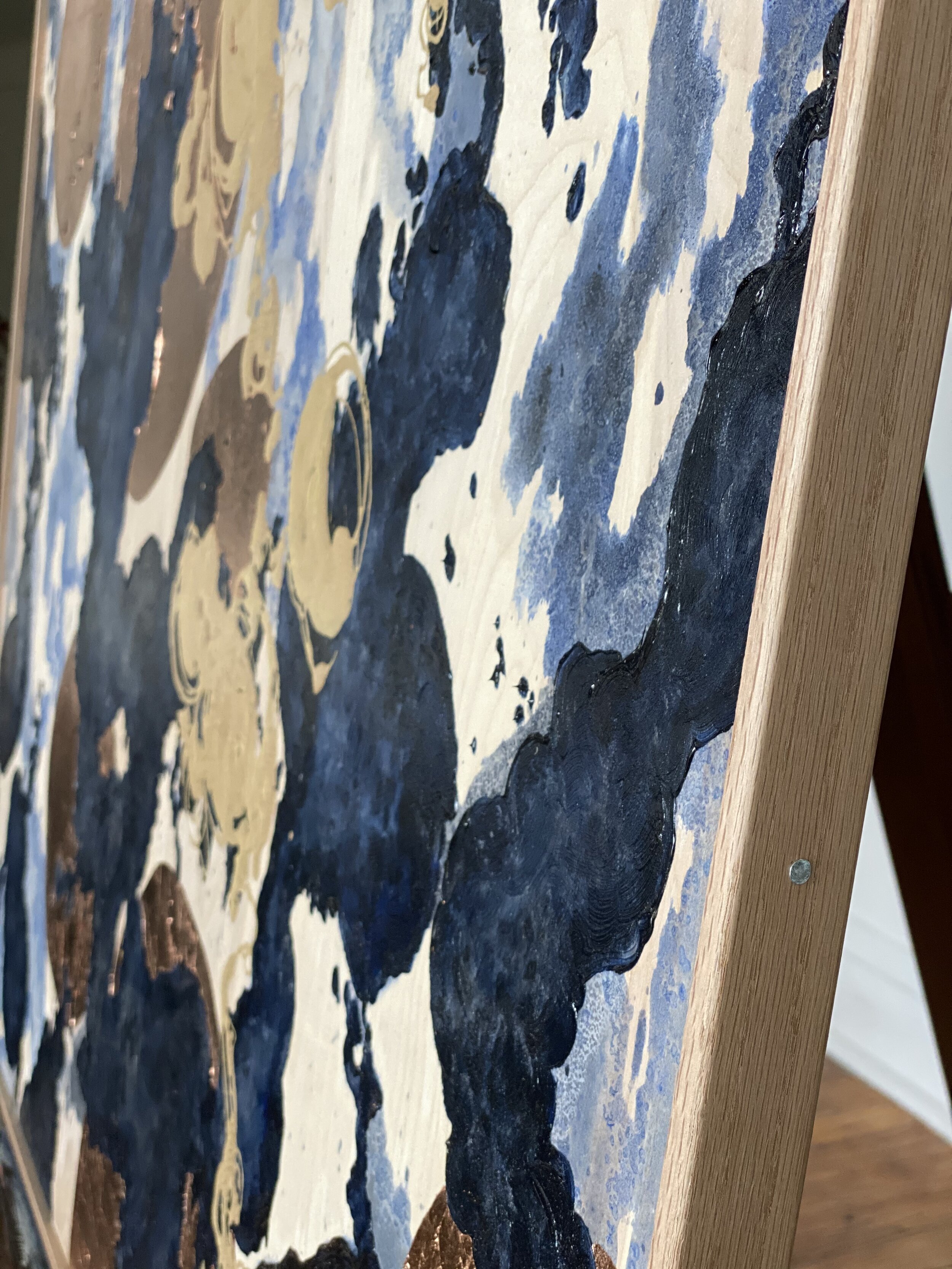Salt Abstracts
Balance, Flow, Push and Pull.
Using watercolor, ink, and any transparent low viscosity medium is like working with something that has a mind of its own: it flows only where it wants to. You can try to force it to do what you want, but ultimately you won’t exactly know how it will turn out. When using it on wood, you don’t know how the grain is going to accept it. When applying oil-based reactive paint, you don’t know if the result will be a small or large effect. So much simply isn’t up to the artist. The artist just needs to embrace it and know when to pick the brush up, or let it linger.
Salt Abstract No. 1 (2020) - Sold
Size: 38x51”
Mediums: Acrylic, salt, oil-based reactive paint, on birch 1/2” ply.
Salt Abstract No. 2 (2021) - Sold
Size: 38x42”
Mediums: Acrylic, salt, oil-based reactive paint, on birch 1/2” ply.
These pieces are about experimentation, and I am not an experimenter. I like things to be perfect the first time. This collection embodies letting go… of the process, the end result, and what I feel it should look like.
When I was in elementary, I had one art class a week. There was a watercolor class that I liked the least because I thought that being an artist meant big brush strokes, heavy mediums, and oils. My teacher told us to pour salt on the painting to add texture and teach us how salt absorbed moisture. I remember thinking that it just felt like “kid” arts and crafts, not “real” art. Now, many years later, I’ve used acrylics as watercolors, thinning paint until it’s completely transparent and using salt heavily. I’ve noticed my perspective shift from one of judgement, to understanding, to including and utilizing every medium I come across. The push and pull of watercolor, the way it absorbs into the surface on its own accord (especially when using salt on a wood surface) is an experience of “letting go.”
—T.G.Novy
























